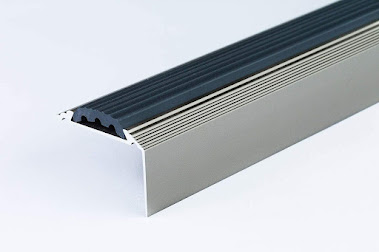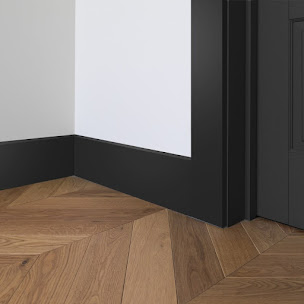Stair Nose Installation and Maintenance Tips
Nosing is a feature that you will frequently see on interior stairs of all varieties, including carpeted and wooden ones. The portion of the step that protrudes from the riser, or the front of the step, is known as the Stair Nosing.
These stair treads conceal the sharp edges that might cause accidents in addition to preventing you from sliding and tumbling down the steps.
Simply measure your steps' anti-slip strips in accordance with those specifications to complete the stair-nosing process. These strips should form a hard coating that will improve your grip when walking or stepping on the staircases, covering the sharp and steep edges of the steps.
Prior to installation, each stepping surface should be cleaned.
Every step surface has to be carefully cleaned before stair nosings are installed. particularly any paint, oils, varnish, grease, rust, and leftover adhesive residue.
Place each stair tread's nose first.
To save space, install the tread nose-first by placing the nose-end of the tread right on the edge of the step. When it comes to safety, installing stair treads without a space between them and the step surface is of utmost importance. Because pressure-induced slippage is most likely to occur at the tread's nose end, how well it adheres,
Cut Stair Nosing to Size:
Take thorough steps and measurements. Before cutting each Aluminium Stair Nosing, double-check your measurement. The stair nosing should be adjusted to the step's exact length.
Secure with Glu:
Depending on the type of stair nosing used, there are numerous installation options. Keep in mind that you are installing a product that will shield the stairway's surface and help in preventing sliding accidents. It is critical to ensure that the stair nosing is as secure as possible.
Allocate Enough Time for the Cure:
Although the curing time for adhesives varies, a good rule of thumb is to give the stair nosing 1 hour after attaching it to an absorbent surface and 2 hours after attaching it to a non-absorbent surface.
Maintenance of Stair Steps:
The method for cleaning the stair nosing can vary depending on the instructions provided by the original manufacturer because some materials might not work well with standard cleaning solutions. Additionally, doing so will prevent you from damaging the current stair nosing and incurring replacement costs. It will be worthwhile to double-check that you're using the right agents.
Defective stair nosing:
Accident risk can be decreased by making sure that frequent inspections are done to check for any problems. Customers, visitors, and employees can be in danger of injury due to damaged stair nosing. If you can identify small faults before they become severe ones and require replacement, you may be able to avoid incurring higher charges.
Stair nosing are therefore necessary to provide the maximum level of safety in your house or place of business, but they are also very helpful in enhancing the building's aesthetic. Consult a stair specialist for guidance if you need help selecting a nosing material that will work for your needs.




Comments
Post a Comment